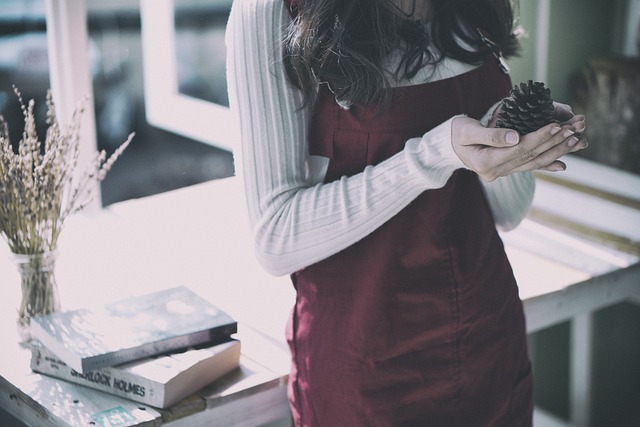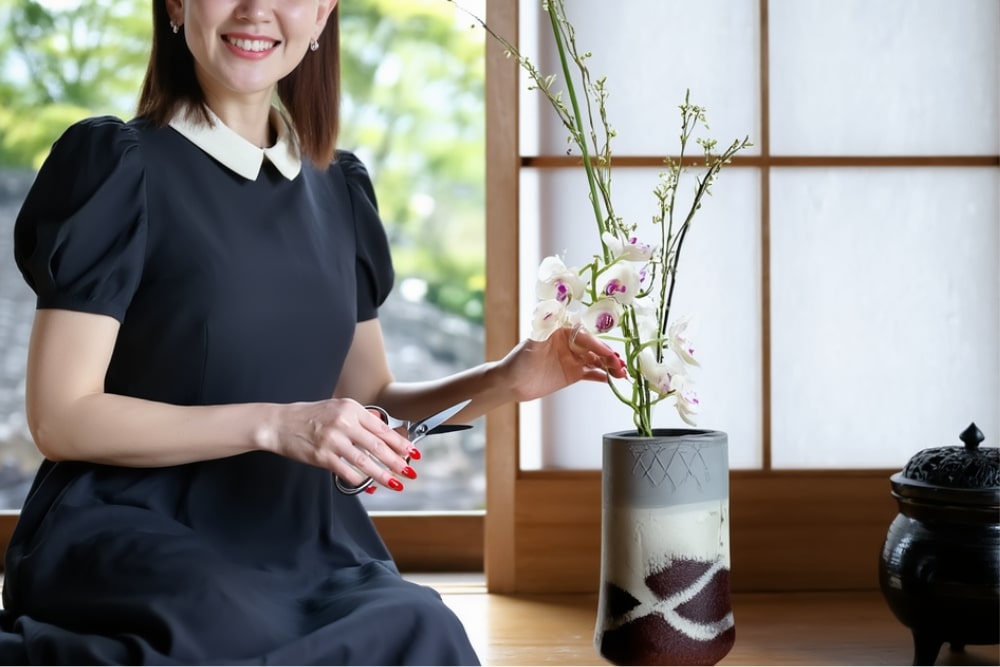
Have you ever felt like, “I’d love to start ikebana, but I don’t know where to begin…”?
Ikebana is not just putting flowers into a container. It is a profound art that involves a dialogue with plants and a pursuit of beauty. In this article, we’ll share important principles to keep in mind when learning ikebana, based on the *Kaden-sho* from Ikenobo, a well-known school of flower arrangement.
These are all ideas that even beginners can put into practice, so please read through to the end.
What Is the Kaden-sho? A Traditional Text Filled with Ikebana Wisdom
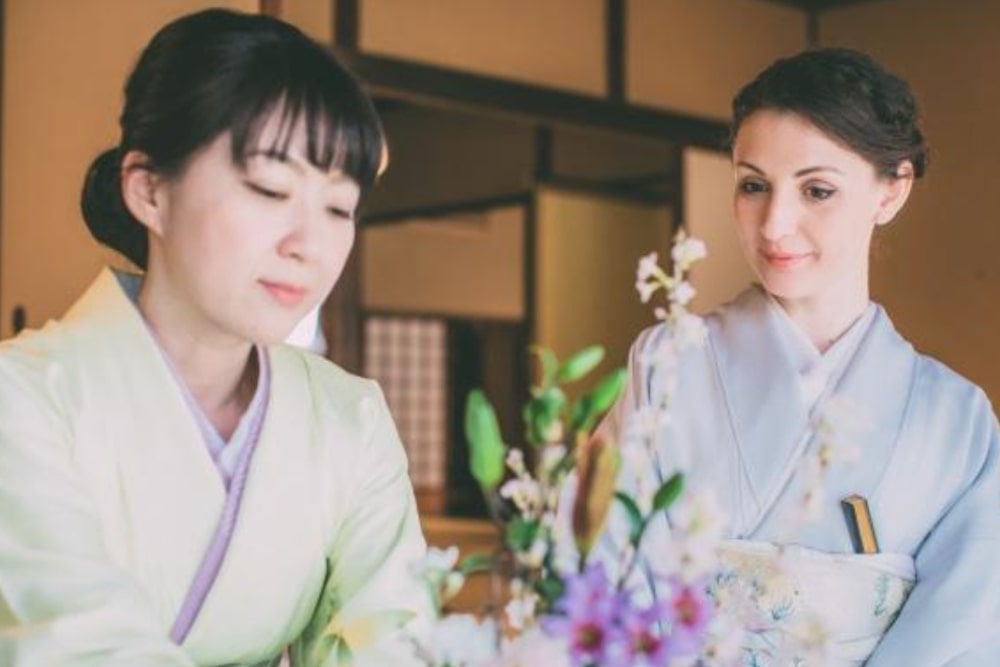
The Kaden-sho is a type of text compiled to pass down methods of ikebana and related knowledge. The oldest known Kaden-sho today is “Kao irai no Kaden-sho,” written in the Muromachi period between 1486 and 1499, which records the ikebana of that time.
In this article, we will pick out and share some of the key mindsets for studying Ikenobo from the four volumes of the Kaden-sho—“Introduction,” “Beginner,” “Intermediate,” and “Advanced”—written by the 45th headmaster of the Ikenobo school, Sen’ei Ikenobo, and published in 1974 (Showa 49) by the Ikenobo Headquarters. These four Kaden-sho volumes are given to those who have just started learning Ikenobo or have been studying for a few years, and they gently describe the attitudes and ways of thinking that are important along the learning path.
A Surprisingly Overlooked Point When Learning from Your Teacher
When you start going to lessons, you naturally pick up basic manners such as courtesy, humility, and paying your tuition on time. But in the “Introduction” volume of the Kaden-sho, something even more important is written.
That is how to look at your teacher’s “corrections.”
When our teacher corrects our arrangement, we students tend to focus only on the parts that were changed. However, the Kaden-sho tells us that what truly matters is trying to read the advanced techniques that cannot be fully expressed in words—such as how branches and leaves are handled and how the hands move. In other words, we should not only look at the areas that were adjusted, but also carefully observe the unspoken movements and gestures of the teacher.
Three Important Principles for Relating to Plants
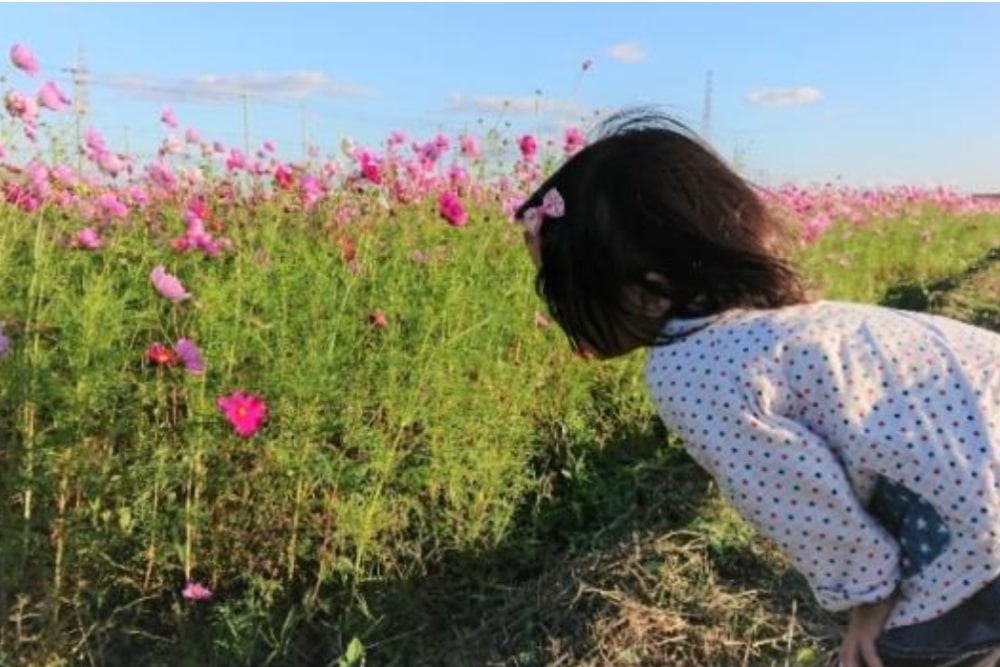
Plants are indispensable in ikebana. So how should we face these colorful, uniquely shaped living things? Here are three key principles from the “Introduction” and “Beginner” volumes of the Kaden-sho.
1. Value Each Plant’s Background and Character
Plants each grow in different environments and have their own characteristics.
For example, a flower that blooms in the mountains and one that grows in a garden live in completely different surroundings. If we ignore that background and arrange them carelessly, we diminish the flower’s true beauty.
Instead of seeing plants merely as “materials with color and shape,” try to imagine what kind of nature they possess and what kind of place they have grown in as you arrange them. To do that, it is important to take an interest in each plant and make an effort to truly get to know it.
2. Never Forget That Plants Are Alive
Plants may look still, but inside they are living beings that are constantly changing.
The timing of when a flower opens or fades does not follow our convenience. Yet as we take an interest in plants, deepen our knowledge, and try to stay close to them, we gradually start to connect with them.
Why not approach ikebana with the mindset of enjoying a dialogue with plants?
3. Respect Both Life and Individuality
When you create an arrangement, you naturally have a purpose or idea of “how you want to express it.”
At the same time, we must not forget that every plant we touch is a living being with its own individuality. Cherishing both your own expression and the natural beauty the plant already possesses—that is what makes ikebana so captivating.
Mindset for Arranging and for Appreciating

Ikebana is not only about arranging flowers; appreciating them is also an important part of learning. Here, we will share some principles from both the perspective of the person creating and the person viewing the work.
A Foundation of Interest in and Affection for Nature
The foundation for arranging flowers lies not in technique, but in the heart.
Being interested in nature, feeling close to it, and recognizing that humans and flowers are living beings sharing the same time—cherishing this awareness allows us to bring out the plants’ beauty.
The Meaning of Leaving Things Out
Ikebana is not about expressing yourself by using as many kinds or stems of flowers as possible.
Sometimes, choosing to “leave things out” is just as important. By limiting the number of varieties or stems, the essence of the plant can stand out more clearly and lead to a deeper expression.
You might call it a “subtractive aesthetics”: a simplicity that allows beauty to be conveyed even more strongly.
When Viewing, Stay Close to the Creator’s Intention
Just as you put your feelings into the works you arrange, each flower arranged by someone else also carries that person’s feelings.
When viewing ikebana, it is important to approach it so that the heart of the arranger and the heart of the viewer can resonate with one another. Asking yourself, “Why did they choose this flower?” or “What feelings did they put into this piece?” may lead you to new discoveries.
The Importance of Continuing Ikebana
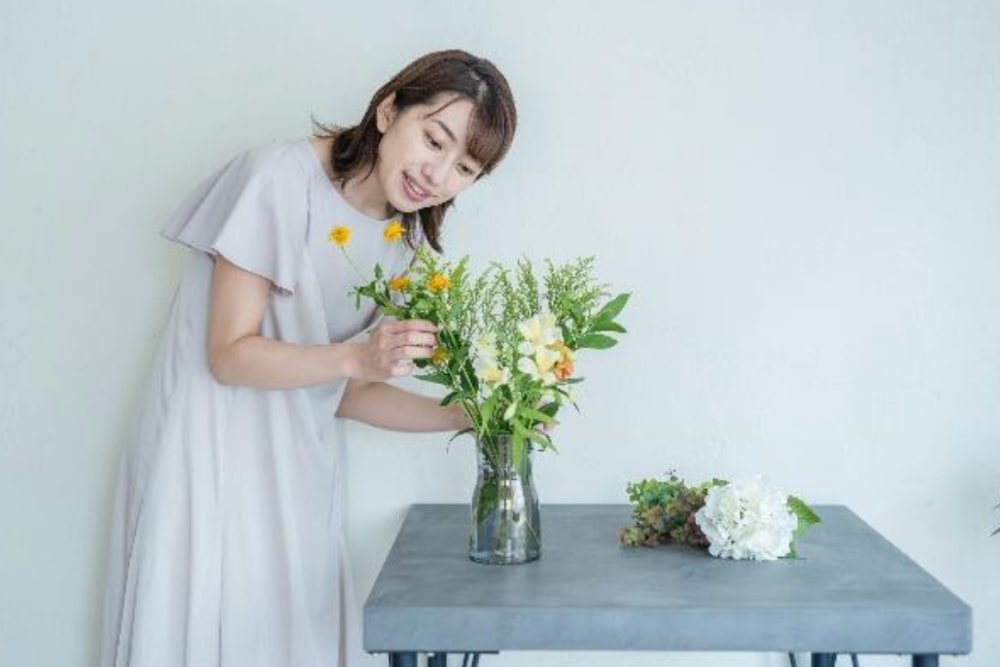
The Kaden-sho also contains many words of encouragement for those studying ikebana. To finish, here are two principles that will make you want to keep going.
Even If You’re Not Skillful, Continuing Will Lead to Deeper Works
One historical Kaden-sho includes a passage like this:
“Even if you are not particularly skillful, if you continue to practice earnestly, you will be able to create arrangements with profound charm.”
You don’t have to be good from the very beginning. By continuing, your own unique form of expression will gradually emerge.
A Series of Surprises and Discoveries Becomes the Joy of Living
Coming into contact with things that are usually invisible to us gives us the chance to look closely at what we had not noticed before. It is both a surprise and a discovery.
To engage in ikebana is to walk a path filled with such surprises and discoveries.
This endless succession of surprises and discoveries leads us to ask what life is, and gradually fosters a desire to cherish not only ourselves but also others—including plants.
Five Principles for Arranging Beautifully

What kind of mindset should we cultivate in our daily lives in order to create more beautiful arrangements? Centering on the “Advanced” volume of the Kaden-sho, here are five guiding principles.
1. Refine the Way You See Things
For someone who practices ikebana, the perspective of “how you look at things” is crucial.
For example, being moved by the姿 of plants in nature, or gazing intently at a single object in order to grasp its essence. Cultivating this “way of seeing” enriches your powers of expression.
2. Feel Beauty with an Honest Heart
It is important to arrange with an awareness of how others will see your work, but just as important is simply feeling the姿 of the plants as “beautiful.”
Don’t forget to express that straightforward feeling just as it is.
3. Keep Asking Yourself What True Beauty Is
“What is true beauty?”—there is no easy answer to this question.
Rather than being swept along by trends, continuing to pursue your own sense of beauty and repeatedly questioning and learning—this is the path to deepening your ikebana.
4. Learn from What Does Not Go as Planned
We grow by encountering things that do not go the way we want.
In ikebana, branches may refuse to bend in the direction you imagined, or the finished work may not match the picture in your mind—this happens all the time. Yet through those experiences, as you come to understand what the plants themselves “want” and learn to make use of it, you also grow.
This growth, in turn, is said to gently transform and beautify your own heart.
Enjoy Ikebana Even More with the Teachings of the Kaden-sho
How did you find this article? There are many aspects of ikebana that can feel difficult, but reading the words of the Kaden-sho can also bring moments of “So that’s what it meant.” I hope this piece becomes an opportunity for you to take an interest in ikebana and Ikenobo, and perhaps to pick up—or revisit—the Kaden-sho you have at hand.


